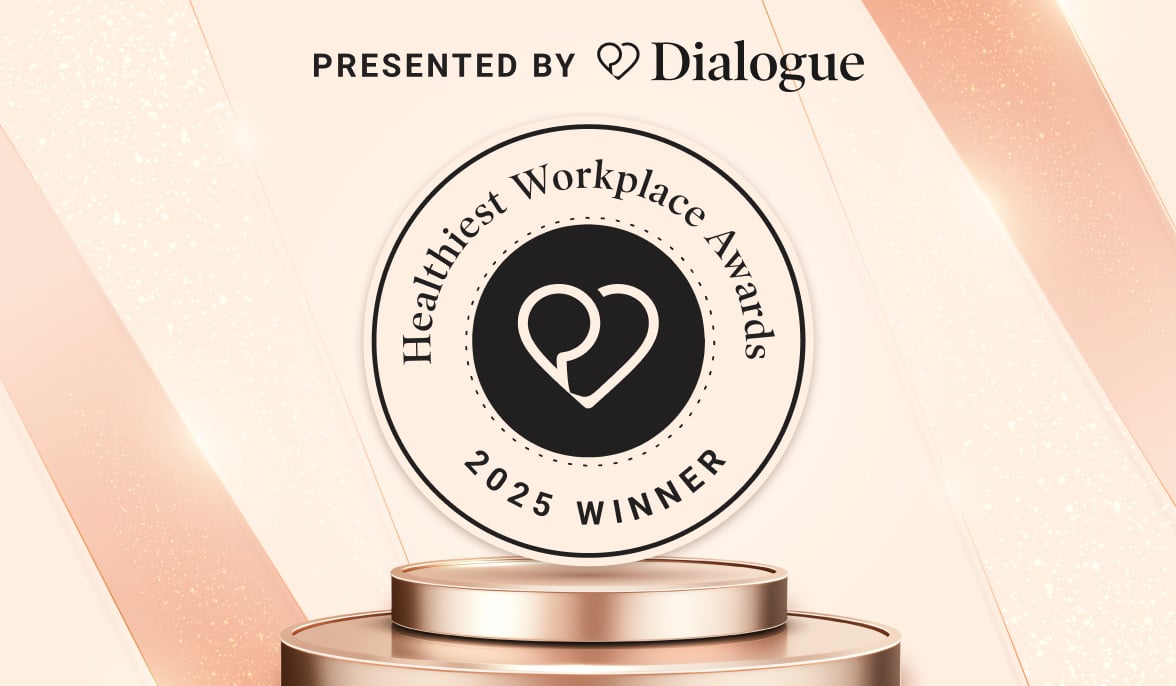As we continue to navigate the pandemic and the hurdles it presents, Desjardins Insurance provides an overview of what they're calling the human side of these challenging times. While they’ve forecasted growth of 6.1% and 4.3% in 2021 and 2022, respectively, and project that Canada’s economy will do well in 2023 with low unemployment rates, they are also very aware of the boomerang effect. Thanks to this, they are preparing employers to turn their employees’ angst into wellness on the physical, financial, and psychological levels.
In this presentation from the 2021 Humanizing Healthcare conference, also available to view here, Lancelot Lambert, Director Business Development, Group Insurance, at Desjardins Insurance, outlines the indicators to look for when assessing how employees have been affected by any of the above-mentioned levels. As he points out, trauma on one level inevitably spills over into the workplace, which is why employers should be equipped to support a more sustainable return to normal.
Indicator #1: Productivity
While productivity remained high – and perhaps even rose – throughout the pandemic, it came at the cost of employees’ health. By looking at their company’s absentee rates, an employer can tell what kind of toll the year of working longer days at home with blurred work/life boundaries took on their employees. How can employers turn their workplace culture into a more flexible one? By looking at these four things:
-
Workload: motivate employees while staying flexible on timelines and goals to avoid additional stress
-
Social support: offer an open team environment with a supportive leader
-
Autonomous decision-making: let employees take the reins so they can feel empowered
-
Recognition: reward employees and resume any unfinished pre-pandemic conversations on possible promotions and advancement
Indicator #2: Demographic profile
Results from various sources have shown that those who left their job during the pandemic were mostly women and young people. Women, who are still more likely to be the ones looking after children, often couldn’t juggle childcare and family while working from home. Young people took this time to rethink their career paths. It should be noted that both of these profiles worked predominantly in hospitality, a hard-hit industry where many businesses were forced to close their doors or let employees go.
Given this knowledge, employers should get to know their staff better; by understanding their employees’ lifestyles and needs, they can update the coverage and support they offer. This is done through two-way, open communication that should be maintained with ex-employees as well.
Indicator #3: Employee lifestyle
With weight gain and substance and alcohol abuse on the rise, some of the post-pandemic effects will include chronic disease and obesity. Three simple ways employers can gauge and stay on top of these issues include:
-
Employee surveys, which should be sent out regularly for continued updates on lifestyle habits and health
-
Usage analysis, which insurers can provide, to give you a snapshot of the resources employees are consulting the most.
-
Employee health questionnaires, to allow employers to assess their employees’ health and wellness needs
By carrying out these simple tasks and creating awareness of the benefits offered, the employer’s toolbox now becomes a treasure chest for everyone in the company.
Indicator #4: Mental health
While a rather obvious one, employers should be looking at how stress has affected their employees and the way it continues to do so. Again, there are some simple and effective ways to keep a watchful eye on these stress levels and how they can be addressed:
-
Study the use of anti-depressants by those in the workplace
-
Consider the number of long-term and short-term disability cases and their causes
-
Train managers on the effects of stress and how they can openly speak to their teams about it
All of the above information can be obtained through a company’s insurance providers
The overall theme is caring – a trait that everyone was very quickly reminded of as workplaces radically switched to teleworking and offering more open and honest environments for their employees. By showing compassion and taking actionable steps to promote employees’ overall health, employers are making the change from what was once the human ECOsystem to what should now be known as the economic HUMAN-system – because humans are now the priority in the workplace.





 Canada (EN)
Canada (EN)
 Global (EN)
Global (EN)









